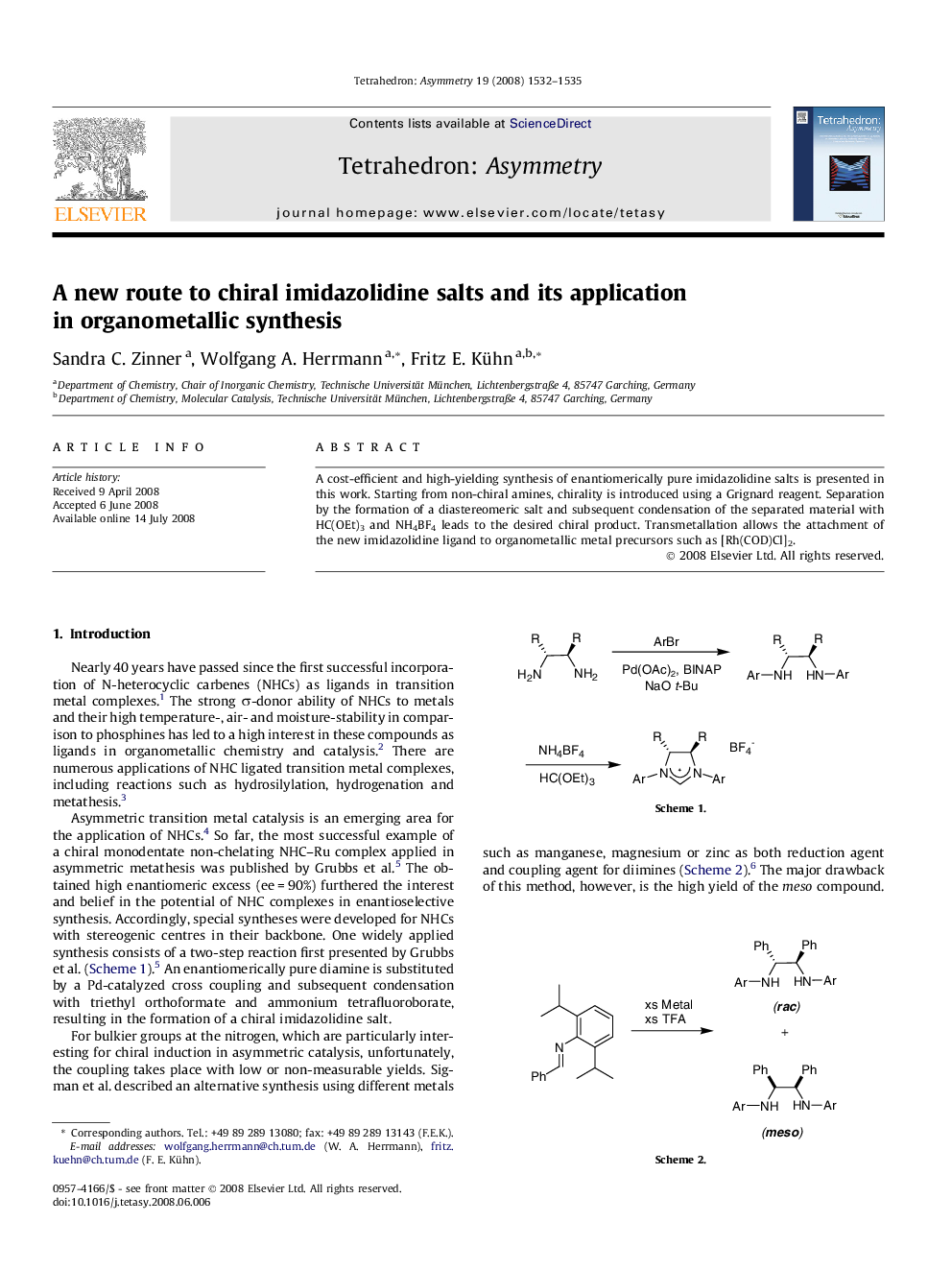| Article ID | Journal | Published Year | Pages | File Type |
|---|---|---|---|---|
| 1347848 | Tetrahedron: Asymmetry | 2008 | 4 Pages |
A cost-efficient and high-yielding synthesis of enantiomerically pure imidazolidine salts is presented in this work. Starting from non-chiral amines, chirality is introduced using a Grignard reagent. Separation by the formation of a diastereomeric salt and subsequent condensation of the separated material with HC(OEt)3 and NH4BF4 leads to the desired chiral product. Transmetallation allows the attachment of the new imidazolidine ligand to organometallic metal precursors such as [Rh(COD)Cl]2.
Graphical abstractFigure optionsDownload full-size imageDownload as PowerPoint slide
N,N′-Bis-(2,6-diisopropyl-phenyl)-1,2-diamino-(1R,2R)-di-tert-butylethaneC34H56N2Ee = 100%[α]D20=-16 (c 0.0063, Et2O)Source of chirality: asymmetric synthesisAbsolute configuration: (1R,2R)
1,3-Bis-(2,6-diisopropylphenyl)-(4R,5R)-di-tert-butyl-4,5-dihydro-imidazolin tetrafluoroborateC35H55BF4N2Ee = 100%[α]D20=-83.3 (c 0.0012, CH2Cl2)Source of chirality: asymmetric synthesisAbsolute configuration: (4R,5R)
[(4R,5R)-1,3-Bis[2,6-diisopropylphenyl]-4,5-di-tert-butylimidazolin-2-ylidene][(1,2,5,6-η)-1,5-cyclooctadiene]iodorhodium(I)C43H65N2RhIEe = 100%[α]D20=-60.6 (c 0.025, CH2Cl2)Source of chirality: asymmetric synthesisAbsolute configuration: (4R,5R)
